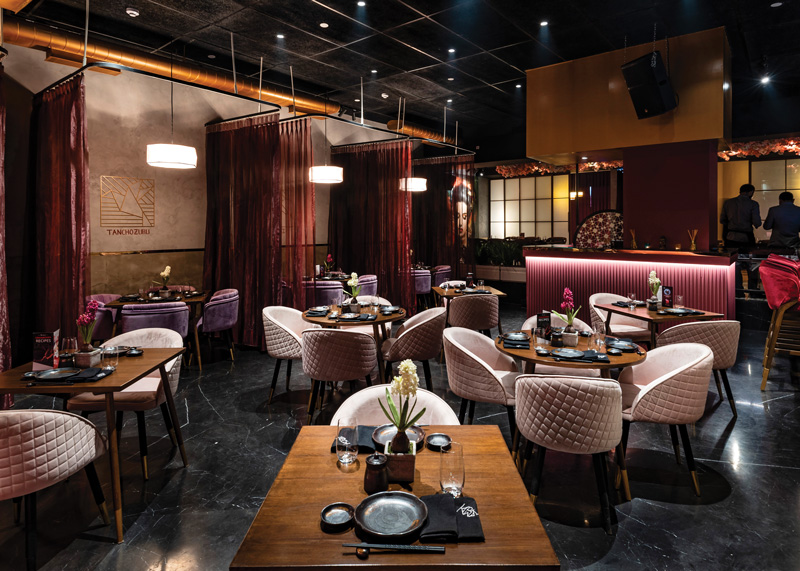With the rise of experience-based dining destinations — those that combine food, beverage, entertainment and new experiences — traditional restaurant venues must now design to compete with a variety of choices.
It takes three things to differentiate from your competition: clarity of audience, clarity of brand and clarity of experience. So, let’s start at the beginning.
- Clarity of audience: One thing thriving brands have in common that they know exactly who their target guest is and why. Everything they do is focused around attracting and staying relevant to that target. Yet the most successful concepts haven’t just identified the profile of their current guest, they’ve also analyzed who their most productive or profitable guest should be and, of course, made their target these customers. When I talk about “a productive customer,” I’m referring to the type of guest that will either spend the most on a per ticket basis or frequent the restaurant significantly more than other customer profiles. It’s important to remember that it costs essentially the same to attract, serve and prepare food for all customer profiles, but concepts have a unique sweet spot where a specific type of guest simply spends more money than the others. When a concept is really focusing on their true sweet spot, they’re maximizing revenue while keeping cost consistent and thereby increasing profits. Of course, the real trick is to identify and clarify your most productive audience. We are in the age of big data, and the data is out there for almost any concept to clearly identify their most productive guest. The data just needs to be harvested and analyzed properly. We have had strong success working with marketing and real estate analytics firms to help home in on our clients’ most productive guest profile and design specifically for that profile. If you’re not clear about your audience and your concept is trying to be too many things to too many people, you’re going to get eaten alive. Stick to your audience and they will stick to your concept.
- Clarity of Brand: When restaurants went through the recession in 2008, the saying, “only the strong survive” held true. What led to many chains’ longevity was the clarity of their brand. They knew what they stood for and understood that consumers would be looking to them to provide the same level of food and service even through uncertain times. Without this clarity, your customers won’t understand what you’re doing, and your competition will take advantage of the uncertainty. According to a Cornell University study, Why Restaurants Fail, the No. 2 cause of restaurant failure is customer confusion. Therefore, the only way to stand out is through designing an experience unique to your brand. Make sure that your target guest understands exactly where to go, what to do and what clearly defines your brand within the first 30 seconds of entering your restaurant. Know what your brand stands for and keep doing what has kept your concept thriving. When you have clarity of audience and clarity of brand, it won’t matter what your competition is doing because you will be doing it better.
- Clarity of Experience: If you think about restaurants, for the most part, they’re all programmed very similarly. Of course, there are slightly different service models — quick service, fast casual and casual dining — but they all have a cook line, they all serve food, they all serve beverages and they all like to think they have a high level of service whether customers are ordering at the table or at the counter. That said, the most successful restaurant owners have well-defined concepts that not only provide a quality food product but they also have a defined operating philosophy. These philosophies encompass organizational values and operating procedures as well as employee and customer relationships. Food quality does not guarantee success because that only relies on one leg of your total brand experience. Create a clear and concise brand experience that is clearly relevant to your target audience. We’re now seeing more brands incorporating unique experiences into their concepts, whether it’s Top Golf, Dave & Busters or The Truck Yard. These concepts are giving their guests a lot more than just food and beverages, and it’s paying off. These concepts are becoming experiential destinations rather than just restaurants. Overall, good restaurant operators should be able to discuss their audience, their brand and the type of experience they are able to deliver. If you can only describe your food when asked about your concept, you’re missing key opportunities for restaurant success. Furthermore, as famous marketing expert and author Seth Godin describes, “it’s not only about finding your purple cow, it’s also about being able to deliver it to the customer in a way that resonates with them.” This is how you differentiate your brand from your competition, and how your concept — whether one unit, 50 or 500 — can continue to thrive.
Interested in taking a deeper dive into these topics?
Steve Starr, president of starrdesign in Charlotte, N.C., is a nationally recognized leader in restaurant and retail design. While his insight and expertise span the hospitality industry, his focus is on branding, consumer behavior and the development process.
Do you have a problem? Would you like three solutions?




